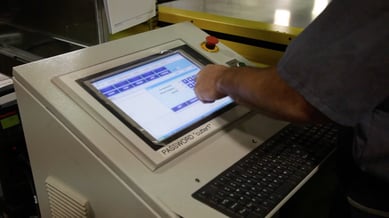One common problem involved in inventory management for sheet metal shops is that there are too many types of fittings to keep track of. While some shops have created a conveyor system for these smaller parts, the problem still remains across the industry - how do you manage them all? In this blog post, we'll explain how innovative software in the duct and fittings industry is helping some contractors and shops manage their small parts more efficiently.
Using CAM Software to Manage Small Duct Fittings and Parts
 The more contractors continue to use the rolled on flange, or the construction goes on the smaller duct, the smaller the parts. A large duct has to go down to the floor, but the smaller ones can go on to a conveyor table. While there are machines out there that assist that, the shop flow is the main problem for most sheet metal shops.
The more contractors continue to use the rolled on flange, or the construction goes on the smaller duct, the smaller the parts. A large duct has to go down to the floor, but the smaller ones can go on to a conveyor table. While there are machines out there that assist that, the shop flow is the main problem for most sheet metal shops.
Through the CAM software available on the market today, shops are able to feed one system and have it distribute information out to all of the different products that are actually involved in making all of those components. Then, through a CAM process called tracking, those parts are labeled with either a barcode or QR code that can be tracked through the shop as it’s being manufactured and loaded onto the truck.
The tracking process can also produce the shipping list, because I’ve loaded on the truck. When product arrives at the job site and someone takes the delivery, we know that every part on the shipping list is at the site and nothing is missing. This ensures that none of the duct components or fittings, even the smallest ones, are lost during production or shipping.
To be able to manage that workflow through the shop with QR code is becoming more of a big deal to the contractors as well as the customer. The tracking for the parts in the shop, coming off the plasma cutter with the barcodes or the QR codes, helps to take the human element out of the process and make it more efficient and require less labor. CAM software, then, will continue to drive this increased efficienc, especially on the fitting side.

